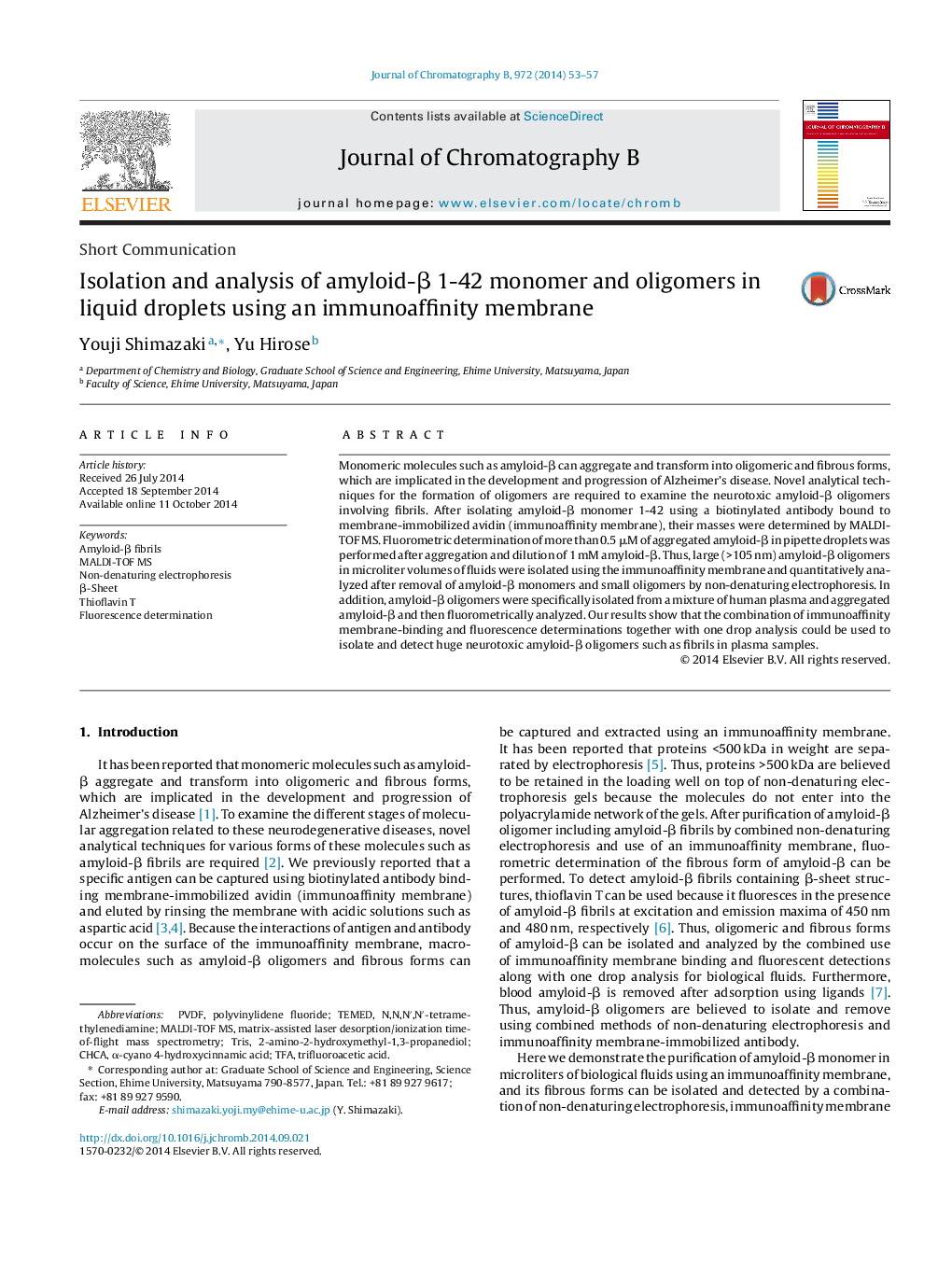| Article ID | Journal | Published Year | Pages | File Type |
|---|---|---|---|---|
| 1215527 | Journal of Chromatography B | 2014 | 5 Pages |
Abstract
Monomeric molecules such as amyloid-β can aggregate and transform into oligomeric and fibrous forms, which are implicated in the development and progression of Alzheimer's disease. Novel analytical techniques for the formation of oligomers are required to examine the neurotoxic amyloid-β oligomers involving fibrils. After isolating amyloid-β monomer 1-42 using a biotinylated antibody bound to membrane-immobilized avidin (immunoaffinity membrane), their masses were determined by MALDI-TOF MS. Fluorometric determination of more than 0.5 μM of aggregated amyloid-β in pipette droplets was performed after aggregation and dilution of 1 mM amyloid-β. Thus, large (>105 nm) amyloid-β oligomers in microliter volumes of fluids were isolated using the immunoaffinity membrane and quantitatively analyzed after removal of amyloid-β monomers and small oligomers by non-denaturing electrophoresis. In addition, amyloid-β oligomers were specifically isolated from a mixture of human plasma and aggregated amyloid-β and then fluorometrically analyzed. Our results show that the combination of immunoaffinity membrane-binding and fluorescence determinations together with one drop analysis could be used to isolate and detect huge neurotoxic amyloid-β oligomers such as fibrils in plasma samples.
Keywords
Related Topics
Physical Sciences and Engineering
Chemistry
Analytical Chemistry
Authors
Youji Shimazaki, Yu Hirose,
